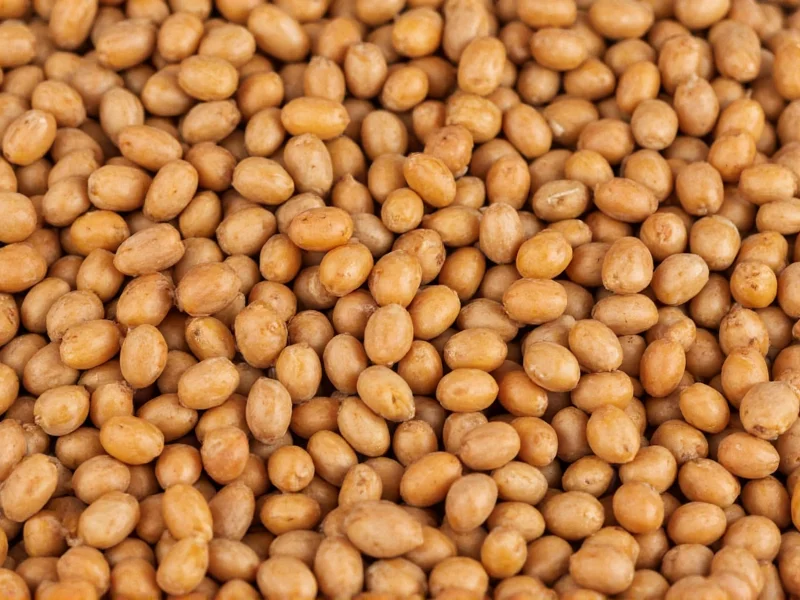Lentils represent one of the earliest domesticated crops, with archaeological evidence dating back to Neolithic times in Turkey and the Middle East. These nutrient-dense legumes have sustained civilizations across Europe, Asia, and Africa for millennia, earning their place as a dietary staple in cuisines from Indian dal to French lentil salad.
Botanical Classification and Characteristics
The lentil plant (Lens culinaris) grows as a bushy annual reaching 15-60 cm in height, producing small pods containing one or two seeds. Lentils belong to the Fabaceae family, sharing botanical relations with beans, peas, and chickpeas, but differ in their flattened lens-like shape and thinner seed coat. This thinner coat contributes to their relatively short cooking time compared to other legumes.
Varieties of Lentils and Their Culinary Applications
Lentils come in multiple varieties, each suited for different cooking applications. Understanding these differences helps home cooks select the right lentil for specific recipes:
| Lentil Type | Color/Appearance | Cooking Time | Best Culinary Uses |
|---|---|---|---|
| Brown/Green Lentils | Olive green to brown | 20-30 minutes | Hearty soups, stews, shepherd's pie |
| French Green (Puy) | Small, marbled blue-green | 25-30 minutes | Salads, side dishes, cold preparations |
| Red/Yellow Lentils | Orange to golden yellow | 15-20 minutes | Dals, purees, thickening soups |
| Black (Beluga) | Small, shiny black | 25-30 minutes | Caviar substitute, salads, pilafs |
Nutritional Profile and Health Benefits
Lentils provide exceptional nutritional value, making them a cornerstone of healthy eating patterns worldwide. A single cup (198g) of cooked lentils delivers:
- 230 calories with 17.9g of plant-based protein
- 15.6g of dietary fiber (62% of daily value)
- Significant amounts of folate (90% DV), iron (37% DV), and manganese (49% DV)
- Negligible fat content (0.8g) and no cholesterol
Regular consumption of lentils contributes to multiple health benefits. Their high fiber content supports digestive health and helps regulate blood sugar levels, making them particularly valuable for people managing diabetes. The combination of protein and fiber creates satiety, aiding in weight management. Additionally, lentils contain polyphenols and other antioxidants that may reduce inflammation and lower the risk of cardiovascular disease.
Cooking Techniques and Preparation
Unlike many legumes, lentils don't require presoaking, though sorting and rinsing before cooking removes debris and reduces potential gas production. The basic cooking ratio is 1 part lentils to 2-3 parts liquid, simmered uncovered until tender. Red and yellow varieties break down easily, making them ideal for creamy dishes, while green and black lentils maintain their shape better for salads and side dishes.
For optimal flavor development, many culinary traditions begin by sautéing aromatics like onions, garlic, and spices before adding lentils and liquid. Adding acidic ingredients like tomatoes or vinegar toward the end of cooking prevents lentils from becoming tough. Properly cooked lentils should be tender but not mushy, with each variety having its ideal texture point.
Storage and Shelf Life Considerations
Dry lentils maintain excellent shelf stability when stored properly. Keep them in airtight containers in a cool, dark place where they'll remain viable for 1-2 years. Once cooked, lentils keep for 3-5 days in the refrigerator or up to 6 months when frozen. For maximum nutritional retention, avoid overcooking lentils, which can degrade heat-sensitive vitamins like folate.
Environmental Impact and Sustainability
Lentils offer significant environmental advantages as a crop. As nitrogen-fixing plants, they improve soil fertility naturally, reducing the need for synthetic fertilizers. Their relatively low water requirements compared to animal protein sources make them a sustainable food choice. A 2021 study published in the Journal of Cleaner Production found that producing 1kg of lentils generates approximately 0.9kg of CO2 equivalent, substantially less than the 9-27kg CO2 equivalent for the same amount of beef.
Common Questions About Lentils
What is the difference between lentils and beans?
Lentils differ from beans primarily in size, shape, and cooking properties. Lentils are smaller, lens-shaped seeds with a thinner seed coat, allowing them to cook faster without presoaking. Beans typically have thicker skins and require longer cooking times, often with presoaking. Botanically, both belong to the legume family but come from different plant species.
Are lentils good for weight loss?
Yes, lentils support weight management through their high protein and fiber content, which promotes satiety and reduces overall calorie intake. A 2016 study in the journal Obesity found that regular legume consumption was associated with 25% greater feelings of fullness compared to other carbohydrate sources, potentially reducing subsequent food intake by 12%.
Do lentils cause gas and bloating?
Some people experience digestive discomfort when first increasing lentil consumption due to their oligosaccharide content. This typically diminishes as gut bacteria adapt. Soaking lentils for several hours before cooking and gradually increasing intake can minimize these effects. Adding spices like cumin or epazote during cooking may also improve digestibility.
Can you eat lentils raw?
No, lentils should not be eaten raw. Raw lentils contain lectins and phytic acid that can cause digestive issues and interfere with nutrient absorption. Cooking destroys these compounds while making nutrients more bioavailable. Sprouting lentils is an alternative preparation method that reduces anti-nutrients while preserving enzyme activity.
How do lentils compare nutritionally to meat?
While lentils provide substantial plant-based protein (18g per cooked cup), they contain less protein per serving than meat and lack complete amino acid profiles. However, lentils offer advantages including zero cholesterol, high fiber content, and significant micronutrients like folate and iron in a more bioavailable form than plant sources. Combining lentils with grains creates a complete protein profile comparable to meat.











 浙公网安备
33010002000092号
浙公网安备
33010002000092号 浙B2-20120091-4
浙B2-20120091-4